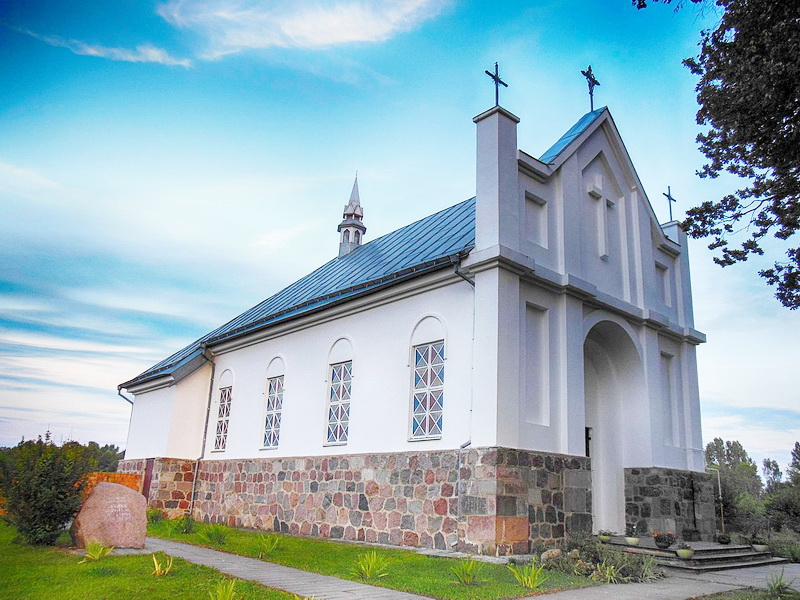History
The church was erected during the interwar period, when Kroshin was part of Poland. Its construction was a significant event for the local Catholic community. The history of the church is closely intertwined with the life of the village native — Pavliuk Bagrym, a talented blacksmith and the author of a single known poem, which has been translated into English and Polish and is displayed on the wall of the church. His name is also associated with a unique artistic relic — a wrought chandelier (girandole) decorated with bird and floral motifs.
Architecture
Despite its relatively modest size, the church impresses with its appearance. The architecture combines elements of Art Nouveau and Neo-Gothic: pointed arch windows, turrets, and carved details. The walls of the church incorporate tombstones from an old Catholic cemetery, which gives the building a distinctive historical atmosphere.
However, the central highlight of the interior is undoubtedly the girandole chandelier, hand-forged in 1881 by Pavliuk Bagrym from cast iron and bronze. Originally, it adorned the house of Kroshin landowner Piotr Svyatopolk-Zawadski and was later donated to the church. The lightness of the structure, delicate details, and refined artistic concept make it a true masterpiece of decorative art.
Excursions
You can visit the Church of the Body of Christ in Kroshin as part of an individual excursion from Minsk, or during a rich travel itinerary through the Brest region or the Ivatsevichy district. The church fits perfectly into combined tour programs, where it can be visited along with local manor houses, churches, and other cultural landmarks. Such an excursion offers a unique journey into the depths of Belarusian history, where the past lives on in every brick and every wrought detail.
